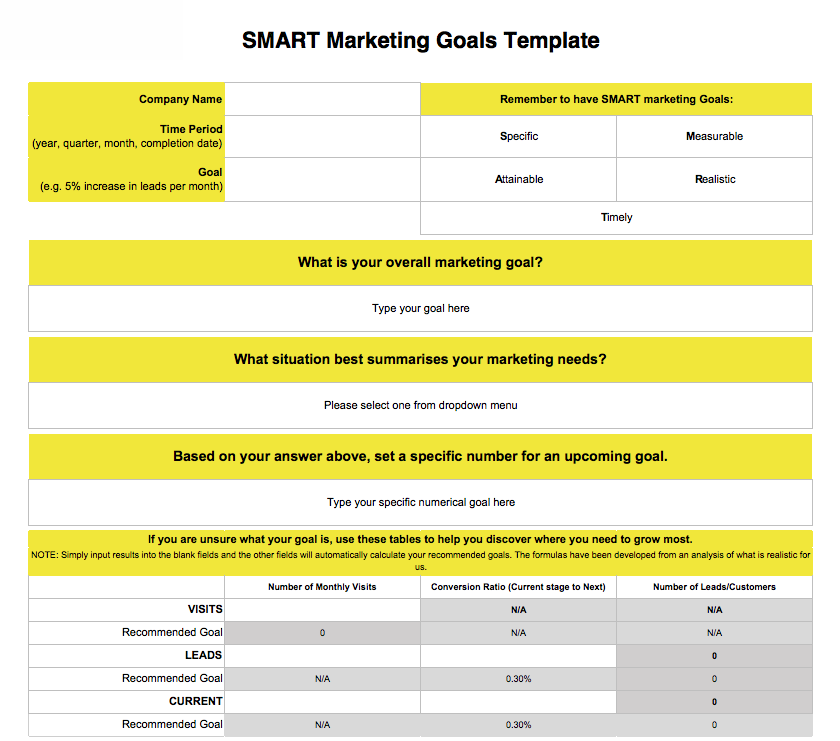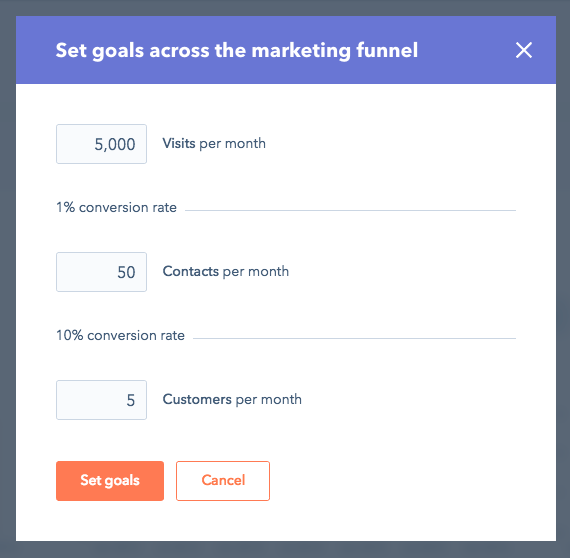Everyone enjoys the feeling of achieving goals, whether in business or in life. Setting and achieving goals is essential for motivation, drive, and personal fulfilment.
However, missing your goals can be a demoralising experience and is something that every person or business would like to avoid. Often the reason behind the failure to meet goals can be because of the way the actual goal or target has been set.
This is where SMART goals can help. But what are SMART goals, why are they useful, how can you set them, and how can you measure them? We aim to answer all of these questions here, and to help you even further, we have created a free SMART Marketing Template you can begin to use straight away.
Click here now to download your free SMART Marketing Template.
What are SMART GOALS?
SMART goals are goals which are:
- Specific
- Measurable
- Attainable
- Relevant
- Timely
How are SMART goals useful?
SMART goals mean that you can focus on meeting an achievable number rather than vague concepts which are hard to define and follow. For example, if you have given your marketing team a goal to “improve brand awareness” how is this defined? How is it measured? What is awareness? What is the brand?
SMART goals will help you to avoid this confusion and set clearly defined goals for your business. SMART goals work well with sales and marketing teams and - used correctly - are a great tool to help to grow your accountancy business.
Applying the SMART philosophy to the earlier goal of increased brand awareness, this goal can become “increase website visitors by 50% from an average of 1,000 visits per month to an average of 1,500 visits per month by September 2018”. This is now a SMART goal which can be understood by your marketing team, it can be measured, and it is achievable. Having relevant goals such as this has a positive effect on staff motivation, morale, and company results.
How do I set SMART goals?
Now we understand what SMART goals are, you need to think about your specific marketing goals and challenges. Our research with accountants shows that one of the biggest challenges is attracting and converting new clients. So SMART goals focused on marketing, lead generation, or website engagement will drive positive results.
Our free SMART Marketing Template makes the process of setting marketing goals a piece of cake. Simply enter your website visits, leads, and customers, and the template will calculate your suggested goals for you. Have a look at our screenshot of the template below.

How do I measure SMART goals?
By their very definition, SMART goals are created so that they are measurable. Not being able to quickly and easily measure your progress is a sure-fire way to miss achieving your goal entirely. To take the headaches out of measuring, tracking, and monitoring your accountancy SMART goals, we recommend using the HubSpot automated marketing platform.
This has a dedicated feature which allows you to enter your SMART goals directly into the system, display them on your personal dashboard, and share them with your team - making setting and tracking SMART goals a breeze (see below).

Sound interesting? You can book a quick demo of the HubSpot platform here: Click here to book a free consultation.
If you are not using HubSpot then you must still ensure your goals are measurable. Google Analytics is a great alternative to HubSpot and allows you to set goals for your website visits from different channels such as social media.
Example of a SMART Goal
We have gone over the theory so let us have a look at putting this into practice. We find it best to start off with your broad goal and then apply the SMART criteria.
Broad Goal:
I want to increase website visitors to create more leads for my accountancy business.
Specific:
I will increase website visits from 1,000 per month on average to 2,000 per month.
Measurable:
I will measure this using HubSpot COS and Google Analytics.
Attainable:
I will use increased social media postings, email marketing, and blogs to achieve my goal.
Relevant:
My conversion rate from website visits to leads is currently 5% so increasing website visits will increase leads.
Timely:
I will do this by 30th June 2018.
SMART Goal:
Via social media, email marketing, and blogging, increase website visits by 100% from an average of 1,000 per month to 2,000 per month by 30th June 2018.
Tip:
The measurement and attainable goal attributes do not need to feature in your final written goal providing you have decided how these two elements of the target will work.
Thank you for reading… You are now officially a SMART accountant. Don’t forget to download our free template to start setting your marketing goals today.
If you found this blog and our download useful, please share so we can continue to spread the SMART marketing goals message.




